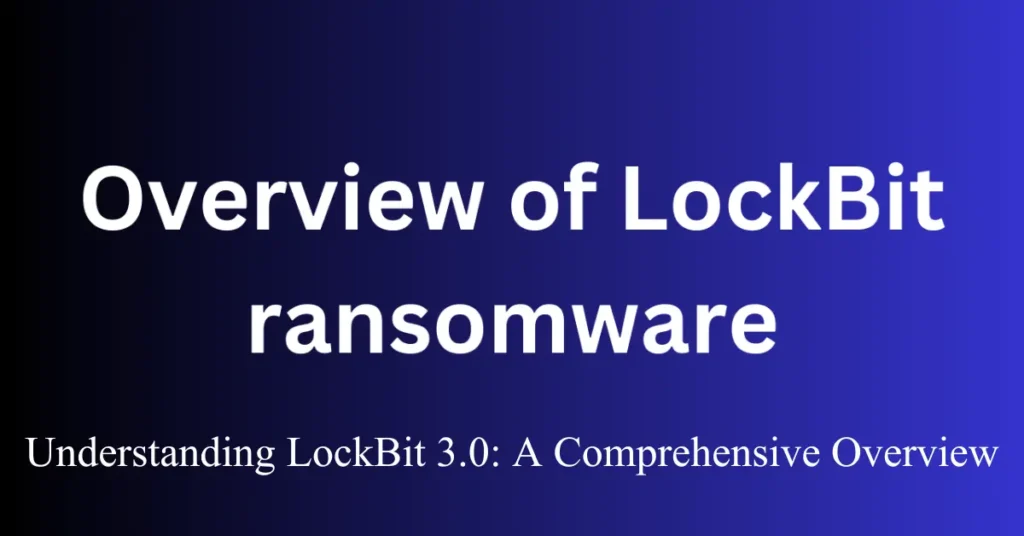In cybersecurity, threats constantly evolve, challenging organisations to adapt and fortify their defences. Among these threats, ransomware stands out as a persistent menace, inflicting significant financial losses and operational disruptions. LockBit 3.0 is a ransomware strain that has emerged as a formidable adversary. To navigate this perilous landscape, you need to have a comprehensive understanding of this ransomware.
Evolution of LockBit
The emergence of this malware marks a significant advancement in the landscape of ransomware, setting it apart from its predecessors through the implementation of advanced techniques designed to evade detection and heighten the severity of its impact. This version showcases an evolution in its approach to encryption, utilising sophisticated algorithms that significantly complicate efforts to recover affected data. This complexity in the encryption process means that victims face even greater challenges in attempting to restore their files without succumbing to the demands of the attackers. Moreover, it has been engineered to leverage multi-threading capabilities. This technical enhancement allows the ransomware to perform its encryption tasks more swiftly by concurrently processing multiple files.
The adoption of multi-threading not only accelerates the encryption process but also enables malware to infiltrate systems and networks at an unprecedented speed. In essence, it represents a more formidable challenge to cybersecurity defences, reflecting a trend in ransomware development toward more resilient and aggressive tactics. The combination of harder-to-break encryption and faster propagation speeds underscores the necessity for organisations to invest in robust cybersecurity measures, including timely software updates, comprehensive backup strategies, and employee training on phishing and other common attack vectors.
Modus Operandi
Upon infiltration, LockBit 3.0 swiftly traverses through the network, exploiting vulnerabilities and weak points in the system’s defences. Its modus operandi entails encrypting sensitive files and asking for ransom payments in exchange for decryption keys. What distinguishes it is its ability to exfiltrate data before encryption, utilising it as leverage to coerce victims into compliance. This dual-threat approach escalates the stakes for organisations, compelling them to respond promptly and decisively.
Distribution Channels
Understanding how it infiltrates systems is crucial for implementing effective preventative measures. It gains access through various vectors such as phishing emails, malicious attachments, or compromised websites. Once inside the network, it employs several techniques, including exploiting unpatched software and weak authentication protocols. Furthermore, it leverages legitimate tools to obfuscate its activities, complicating detection efforts.
Impact and Implications
The repercussions of this attack extend far beyond financial losses, encompassing reputational damage and regulatory consequences. Organisations that fall victim to such attacks face the daunting challenge of restoring operations while navigating legal and compliance obligations. Moreover, the proliferation of ransomware-as-a-service (RaaS) models has democratised access to sophisticated malware like this, amplifying its threat landscape and exacerbating its impact.
Mitigation Strategies
Mitigating the risks posed by it necessitates a multi-faceted approach that encompasses proactive defences and robust incident response capabilities. Implementing rigorous cybersecurity hygiene practices like regular software updates, network segmentation, and comprehensive employee training can thwart initial infiltration attempts. Additionally, deploying advanced threat detection mechanisms and resilient data backup solutions can minimise the impact of successful breaches. Collaboration with industry peers and law agencies is also crucial for enhancing threat intelligence sharing, enabling a collective defence against ransomware threats like this.
LockBit 3.0 represents a significant threat in the evolving landscape of ransomware attacks. Its advanced capabilities and dual-threat strategy underscore the importance of strengthening cybersecurity defences. By comprehensively understanding its modus operandi, distribution channels, and impact, organisations can formulate effective mitigation strategies to safeguard against potential attacks. However, vigilance remains paramount as adversaries continually innovate and adapt their tactics. Only through a concerted effort to bolster cybersecurity resilience can organisations mitigate the risks posed by ransomware threats like this and protect their digital assets and operations
